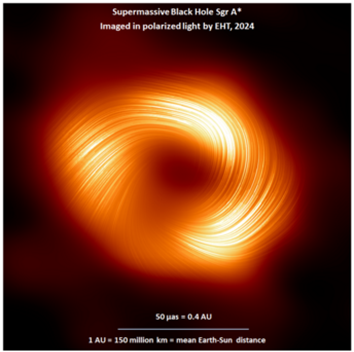Led by I. Martí-Vidal, this research line develops advanced polarimetric and imaging algorithms for VLBI. The responsible researcher is a member of the Event Horizon Telescope (EHT) Collaboration, which produced the first images of two supermassive black holes (SMBHs) (M87* and the Galactic Center, SgrA*). He created "PolConvert", an essential algorithm for the incorporation of ALMA as the most sensitive station of the EHT, as well as the "PolSolve" algorithm, used to generate the first polarized image of M87*. Martí-Vidal also coordinated the EHT Polarimetry Group until mid-2022, and is still playing a key role in the data calibration, imaging and analysis. Additionally, PolConvert is becoming widely used in other VLBI arrays, like the European VLBI Network (EVN), the australian ATCA, and the Global VLBI Observing System (VGOS), which will soon allow unprecedented (sub-)millimeter geodetic precisions in tracking Earth’s surface motion. Ongoing developments based on PolConvert are improving the modelling of instrumental polarization of ultra-wideband receivers, which limit the VGOS dynamic range (and, hence, its geodetic accuracy) and may be critical for the next-generation EHT. This line of research is developing advanced polarimetric and imaging algorithms, to optimally calibrate cutting-edge VLBI instruments (EHT, GMVA-ALMA, VGOS, EVN), and to apply them in astrophysical analyses of polarimetric data, particularly to improve the geodetic and astrometric performance of Global VLBI arrays.
Senior researchers: I. Martí-Vidal







